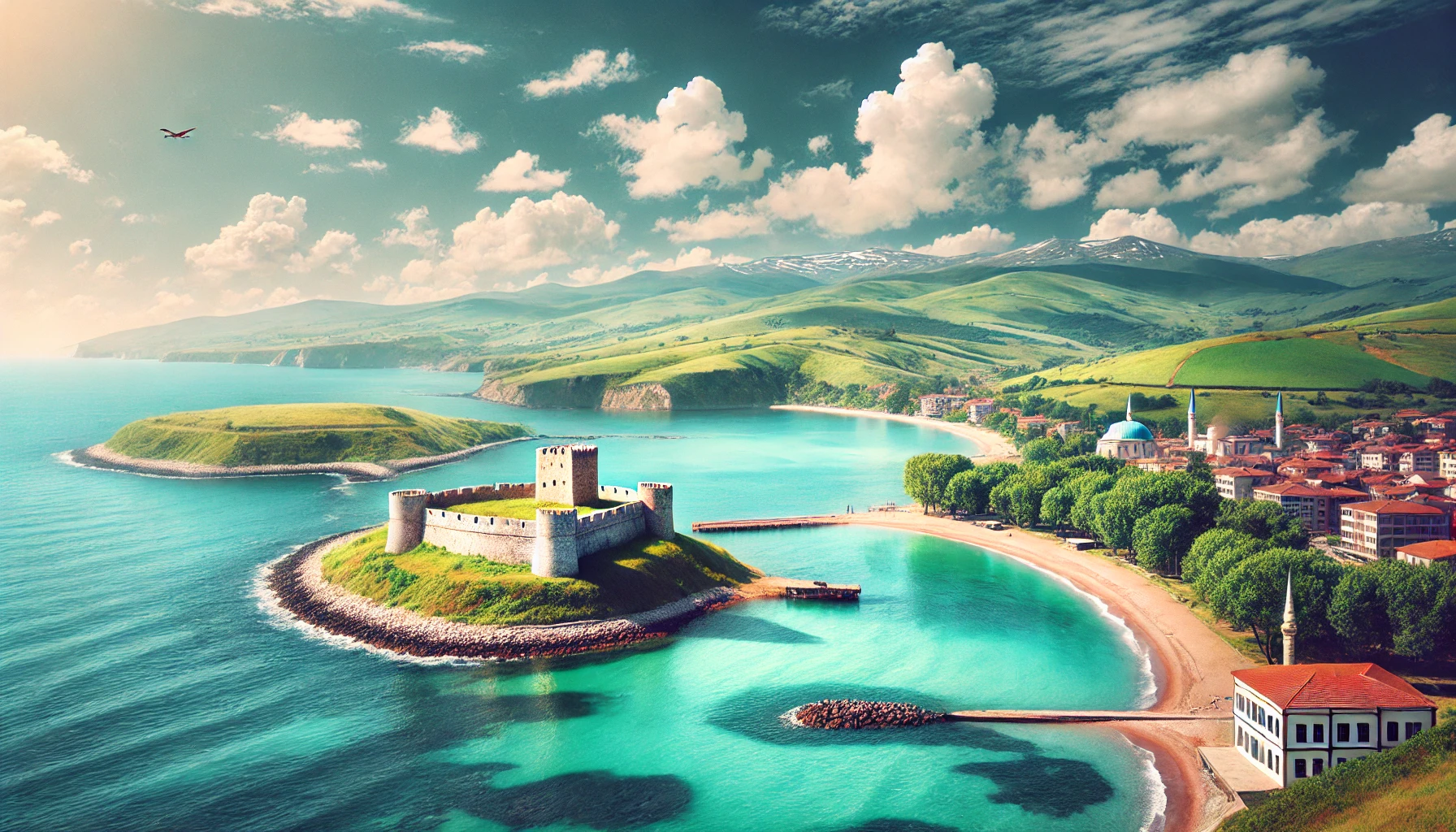Whale Watching Tourism in Turkey
Whale watching, a captivating and educational experience, allows tourists to observe majestic whales and dolphins in their natural habitat. While Turkey might not be the first destination that comes to mind for whale watching, its unique geographic location and rich marine biodiversity offer intriguing opportunities for marine wildlife enthusiasts. This article explores the potential and experiences of whale watching tourism in Turkey, highlighting the best locations, times to visit, and tips for an unforgettable adventure.
The Magic of Whale Watching
Understanding Whale Watching
Whale watching is the practice of observing whales and dolphins in the wild. It is an eco-friendly tourism activity that promotes marine conservation and raises awareness about the importance of protecting these magnificent creatures and their habitats. Tourists often embark on guided boat tours led by marine biologists or experienced guides who provide insights into the behavior, biology, and conservation of marine mammals.
Why Whale Watching in Turkey?
Turkey’s strategic location between the Aegean, Mediterranean, and Black Seas provides a diverse marine environment that supports a variety of marine life. While Turkey is not traditionally known for whale watching, recent studies and sightings suggest that it is home to several species of whales and dolphins, making it an emerging destination for this activity.
Top Whale Watching Destinations in Turkey
The Aegean Coast
Overview
The Aegean Coast, with its clear blue waters and picturesque landscapes, offers excellent conditions for marine activities. This region is becoming increasingly popular for whale and dolphin watching due to the sightings of various cetacean species.
Key Locations
- Kuşadası: Known for its vibrant tourism scene, Kuşadası offers boat tours that often include dolphin sightings and occasionally, whales.
- Çeşme: This coastal town provides opportunities to see dolphins and sometimes even larger marine mammals during the migration season.
Best Time to Visit
The best time for whale watching on the Aegean Coast is from late spring to early autumn when the sea conditions are calm and conducive to boat tours.
The Mediterranean Coast
Overview
The Mediterranean Coast of Turkey is famous for its beautiful beaches, ancient ruins, and crystal-clear waters. It is also a promising area for whale watching, with several marine species frequenting these waters.
Key Locations
- Antalya: Known for its stunning coastline, Antalya offers boat tours that occasionally report sightings of dolphins and pilot whales.
- Kaş: A favorite spot for divers, Kaş also provides opportunities for marine wildlife tours, where dolphins are a common sight, and there are occasional reports of larger cetaceans.
Best Time to Visit
The optimal time for whale watching in the Mediterranean is between May and October, coinciding with the peak tourist season and favorable sea conditions.
The Black Sea Coast
Overview
The Black Sea, with its unique marine ecosystem, offers a different whale watching experience. While less popular than the Aegean and Mediterranean coasts, it holds potential for observing marine mammals.
Key Locations
- Sinop: This coastal city is known for its rich maritime history and has reported sightings of dolphins and other marine mammals.
- Trabzon: Situated further east, Trabzon offers a scenic backdrop for marine excursions, including potential dolphin watching.
Best Time to Visit
The best time to explore the Black Sea for whale watching is from June to September, when the weather is mild and the sea is calmer.
Preparing for a Whale Watching Tour in Turkey
Choosing the Right Tour Operator
Selecting a reputable and eco-friendly tour operator is crucial for a successful whale watching experience. Look for operators that prioritize marine conservation, employ knowledgeable guides, and adhere to responsible wildlife viewing guidelines.
What to Bring
When embarking on a whale watching tour, it is essential to come prepared. Here are some items to consider bringing:
- Binoculars: To get a closer look at the whales and dolphins from a distance.
- Camera: To capture the incredible moments of marine wildlife encounters.
- Sunscreen: Protect your skin from the sun’s rays, especially during long hours on the water.
- Hat and Sunglasses: To shield yourself from the sun and enhance visibility.
- Comfortable Clothing: Dress in layers to adapt to changing weather conditions at sea.
- Motion Sickness Medication: If you are prone to seasickness, consider taking medication beforehand.
Safety Tips
- Listen to the Guide: Follow all instructions provided by your guide or captain to ensure a safe and enjoyable experience.
- Stay Seated: Remain seated while the boat is moving to avoid accidents.
- Respect Marine Life: Do not attempt to touch or feed the animals. Observing from a distance is crucial for their safety and well-being.
The Impact of Whale Watching Tourism
Promoting Marine Conservation
Whale watching tourism can significantly contribute to marine conservation efforts. By raising awareness about the importance of protecting marine ecosystems and the species that inhabit them, tourists can become advocates for ocean preservation.
Economic Benefits
Whale watching tours provide economic benefits to local communities by creating jobs and supporting local businesses. This sustainable form of tourism can help boost the economy while promoting environmental stewardship.
Education and Research
Whale watching tours often include educational components, where guides share information about marine biology, ecology, and conservation. These tours can also support scientific research by providing valuable data on marine mammal sightings and behaviors.
Unique Marine Species to Look For in Turkey
Dolphins
Dolphins are among the most commonly sighted marine mammals in Turkey’s waters. Species such as the common dolphin, bottlenose dolphin, and striped dolphin can often be seen riding the bow waves of boats.
Sperm Whales
Sperm whales, known for their impressive size and deep-diving capabilities, have been occasionally spotted in the deeper waters off Turkey’s coast. These sightings are less frequent but provide an exciting opportunity for whale watchers.
Fin Whales
The fin whale, the second-largest whale species, is another rare but possible sighting in Turkish waters. They are typically seen during their migration periods.
Pilot Whales
Pilot whales, often seen in pods, can sometimes be spotted along the Aegean and Mediterranean coasts. They are known for their social behavior and close-knit groups.
Whale watching tourism in Turkey offers a unique and enriching experience for nature enthusiasts and travelers. With its diverse marine ecosystems and stunning coastal landscapes, Turkey provides an emerging destination for observing magnificent marine mammals in their natural habitat. By choosing responsible and eco-friendly tour operators, visitors can enjoy unforgettable encounters with whales and dolphins while supporting marine conservation efforts. Whether you are sailing along the Aegean, exploring the Mediterranean, or venturing into the Black Sea, Turkey’s waters promise a memorable adventure for all.
Latest Update: Jul 22, 2024
Your Content Goes Here
TAGS: Aegean Coast whale watching, Black Sea dolphin sightings, dolphin tours Turkey, marine conservation Turkey, marine wildlife Turkey, Mediterranean Coast marine tours, Turkey boat tours, Turkey eco-friendly tours, whale watching season Turkey, whale watching Turkey
A brief summary of the key points in this article.
















